Subtotal: £33.87
5 X Female Betta splendens – Siamese Fighting 5 XFish, Beautifully Colorful Betta Fish for Peaceful Aquariums, Ideal for Fish Breeding and Enthusiasts of Tropical Fish, Easy Care Fish for Beginners
£23.99 Original price was: £23.99.£19.99Current price is: £19.99.
Welcome these beautiful 5 X Female Betta splendens to your aquarium! Known for their vibrant colors and graceful movements, these Siamese fighting fish are perfect for beginners. Create a peaceful community tank with these colorful companions, thriving in a loving home.
Species Introduction
The Betta splendens, commonly known as the Siamese fighting fish, is a captivating species native to the shallow waters of Southeast Asia, particularly in Thailand, Cambodia, and Vietnam. These beautiful creatures thrive in freshwater environments, often found in rice paddies, ponds, and slow-moving streams. Their vibrant colors and flowing fins make them a favorite among aquarium enthusiasts, especially for those seeking to create a peaceful aquarium setup. Female Betta fish are particularly known for their stunning array of colors and patterns, which can vary significantly from one individual to another. Unlike their male counterparts, females are generally less aggressive, making them ideal for community tanks and breeding projects. Understanding their natural habitat is crucial for providing optimal care and ensuring their well-being in a home aquarium.
Care Requirements Dashboard
| Optimal Living Conditions | |
|---|---|
| Water Temperature | 24-27°C (75-81°F) |
| pH Level | 6.5-7.5 |
| Water Hardness | 4-12 dKH |
| Minimum Tank Size | 80L (20 gal) |
| Salinity | Freshwater |
| Care Level | Beginner Friendly |
✓ Care Level: Easy
| Parameter | Requirements |
|---|---|
| Tank Size | Minimum 10 gallons |
| pH Level | 6.5 – 7.5 |
| Temperature | 76°F – 82°F (24°C – 28°C) |
| Water Hardness | 5 – 20 dGH |
Natural Behavior & Temperament
Female Betta fish exhibit a range of fascinating behaviors that reflect their natural instincts. In the wild, they are known to inhabit densely vegetated areas, which provide them with both shelter and hunting grounds. They are generally peaceful and can often be observed swimming gracefully among plants and decorations in the tank. However, it is important to note that while females are less aggressive than males, they can still exhibit territorial behavior, particularly when breeding or if they feel threatened. Social dynamics among female Bettas can vary, and it is advisable to introduce them to the tank gradually to minimize stress and aggression. Observing their interactions can provide insights into their social hierarchy and help ensure a harmonious community tank environment.
Tank Setup Guide
Creating an ideal environment for your female Betta fish involves careful consideration of tank setup and decorations. A minimum tank size of 10 gallons is recommended to provide ample swimming space and to help maintain stable water parameters. The substrate should be soft and smooth to prevent injury to their delicate fins. Fine gravel or sand is an excellent choice. Incorporating live plants, such as Java fern or Anubias, not only enhances the aesthetic appeal of the aquarium but also provides hiding spots and foraging opportunities for your fish friends. Additionally, using decorations like caves and driftwood can create territories and reduce stress. Ensure that the setup includes a gentle filtration system to maintain water quality without creating strong currents, which can be stressful for Betta fish.
Water Quality Management
Maintaining optimal water quality is crucial for the health and well-being of your female Betta fish. Regular testing of pH levels, temperature, and hardness is essential to ensure a stable environment. The ideal pH range for Betta fish is between 6.5 and 7.5, while the temperature should be kept between 76°F and 82°F (24°C – 28°C). It is important to use a reliable aquarium heater to maintain consistent temperatures, as fluctuations can lead to stress and health issues. Additionally, performing regular water changes of 25-30% every two weeks will help remove toxins and maintain water clarity. Monitoring ammonia, nitrite, and nitrate levels is also vital to prevent harmful spikes that can endanger your aquatic companions.
Feeding & Nutrition
Feeding your female Betta fish a balanced diet is essential for their health and vitality. A varied diet consisting of high-quality pellets, frozen or live foods such as brine shrimp, and bloodworms will ensure they receive the necessary nutrients. It is recommended to feed them small amounts 2-3 times a day, allowing them to consume what they can in a few minutes to prevent overfeeding and water quality issues. Additionally, providing a mix of protein-rich foods will enhance their coloration and overall health. Observe your fish’s behavior during feeding times to ensure they are eating well and adjust the diet as needed. Always remove any uneaten food after feeding to maintain water quality.
Compatibility Guide
When it comes to tank mates, female Betta fish can coexist peacefully with a variety of community fish. However, it is crucial to select compatible species to avoid aggression and stress. Suitable tank mates include small, non-aggressive fish such as neon tetras, guppies, and Corydoras catfish. It is advisable to avoid keeping them with fin-nipping species or overly aggressive fish, as this can lead to stress and injury. A compatibility chart can help guide your choices, ensuring a harmonious community tank environment. Always monitor interactions closely when introducing new fish to the tank, and be prepared to separate them if any signs of aggression occur.
Tank Mate Compatibility Guide
Great Tank Mates
- Similar sized peaceful fish
- Bottom dwellers
- Robust community fish
Avoid These Tank Mates
- Very small fish
- Long-finned fish
- Aggressive species
Compatibility Note: Always research specific species requirements and observe fish behavior when introducing new tank mates. Individual fish personalities can vary!
Health & Wellness
Maintaining the health and wellness of your female Betta fish requires vigilance and proactive care. Common health issues include fin rot, velvet disease, and ich, which can arise from poor water quality or stress. Regular monitoring of their appearance and behavior is essential; look for signs of lethargy, loss of appetite, or unusual swimming patterns. To prevent health issues, ensure proper tank maintenance, including regular water changes and monitoring water parameters. If health problems arise, it is crucial to act quickly by isolating the affected fish and treating them with appropriate medications. Providing a stress-free environment with plenty of hiding spots and stable water conditions will significantly contribute to their overall health.
Breeding Information
Breeding female Betta fish can be a rewarding experience for enthusiasts. To successfully breed Bettas, it is essential to create the right conditions. Begin by conditioning the female with a high-protein diet for several weeks before introducing her to a male. The breeding tank should be a separate, well-planted environment with a gentle filter and heater. The male will build a bubble nest, and once the female is ready, she will display vertical stripes, indicating her receptiveness. After spawning, the male will care for the eggs while the female should be removed to prevent aggression. Once the fry hatch, they require infusoria or finely crushed flakes until they are large enough to eat baby brine shrimp. Monitoring the fry’s growth and health is crucial during this delicate stage.
Acclimation Process
Introducing your female Betta fish to a new tank requires a careful acclimation process to minimize stress and ensure a smooth transition. Begin by floating the sealed bag containing the fish in the aquarium for about 15-20 minutes to equalize the temperature. After that, gradually introduce small amounts of tank water into the bag every 5 minutes to help the fish adjust to the new water parameters. This process should continue for at least an hour before gently releasing the fish into the tank. Avoid adding the water from the bag to the tank, as it may contain harmful substances. Monitor the fish closely for the first few days to ensure they are adapting well to their new environment.
Long-term Care
The long-term care of female Betta fish involves understanding their lifecycle and growth expectations. Bettas typically live for 3 to 5 years, depending on their care and environment. Regular monitoring of their health, water quality, and diet is essential throughout their lives. As they age, their activity levels may decrease, and they may require adjustments in their diet or tank conditions. Providing a stable environment with minimal stressors will contribute to their longevity. Additionally, keep an eye on any signs of aging or health issues, and be prepared to make necessary changes to their care regimen to ensure they remain healthy and vibrant.
Natural Habitat Recreation
Recreating the natural habitat of female Betta fish in your aquarium is crucial for their well-being. Incorporate live plants, such as floating varieties, to mimic their natural environment. The use of driftwood and rocks can create hiding spots and territories, allowing your fish friends to feel secure. Aim for a well-planted aquarium that provides both open swimming spaces and sheltered areas. The addition of leaf litter or natural substrates can enhance the biotope, providing a more authentic experience for your Bettas. Regularly maintaining the plants and decorations will help keep the tank environment healthy and visually appealing.
Seasonal Care Adjustments
As seasons change, so do the needs of your female Betta fish. During the warmer months, ensure that the tank temperature remains stable and does not exceed 82°F (28°C). Use fans or air conditioning to prevent overheating. In contrast, during colder months, it is essential to maintain a consistent temperature using a reliable heater. Additionally, adjust the lighting duration to mimic natural daylight cycles, which can influence breeding behaviors and overall health. Regularly check water parameters, as fluctuations can occur with seasonal changes, and be proactive in maintaining optimal conditions for your aquatic companions.
Expert Tips
For those looking to provide the best care for their female Betta fish, consider implementing these expert tips. First, invest in a high-quality water testing kit to monitor parameters regularly. This will help you catch any issues before they become serious. Secondly, consider adding a small air pump and sponge filter to improve water circulation while maintaining gentle flow. This can enhance the overall environment for your fish. Lastly, engage with your Betta fish by spending time observing their behaviors and interactions. This not only enriches their lives but also helps you identify any changes that may indicate health issues. Providing a stimulating environment with varied feeding options and decor will keep your fish active and healthy.
Troubleshooting
Despite your best efforts, you may encounter challenges while caring for your female Betta fish. Common issues include water quality problems, aggression among tank mates, and health concerns. If you notice any signs of stress or illness, such as faded colors or unusual swimming patterns, take immediate action by checking water parameters and performing a water change if necessary. If aggression arises, consider rearranging the tank decor to disrupt established territories. In cases of illness, isolate the affected fish and consult with a veterinarian or aquarist for appropriate treatment options. Being proactive and observant will help you address issues before they escalate, ensuring a healthy and thriving aquarium.
Scientific Background
The Betta splendens belongs to the family Osphronemidae and is scientifically classified under the order Anabantiformes. This species is renowned for its remarkable adaptability to various freshwater environments, which has contributed to its popularity in the aquarium trade. Research on Betta fish behavior and breeding has provided valuable insights into their social structures and reproductive strategies. Conservation efforts are essential to protect their natural habitats, as urbanization and pollution pose significant threats to their populations in the wild. Understanding the scientific background of Betta fish can enhance your appreciation for these beautiful creatures and inform your care practices.
Advanced Care Techniques
For dedicated aquarists looking to elevate their care for female Betta fish, advanced techniques can enhance their health and well-being. Consider implementing a planted tank with a focus on aquascaping principles to create a visually stunning environment. Utilizing a CO2 system can promote healthy plant growth, which in turn improves water quality. Additionally, explore the benefits of using a UV sterilizer to reduce harmful pathogens in the water. Regularly participate in aquarist communities to share experiences and gain insights from fellow enthusiasts. Continuous learning and adaptation of care techniques will contribute to a thriving and beautiful aquarium.
Frequently Asked Questions
Q: What tank size is required for female Betta splendens?
Female Betta splendens thrive in a minimum tank size of 20 litres. This provides ample space for swimming and reducing territorial disputes. Although females are generally less aggressive than males, they still require personal space to establish their own territories. Including plants and decorations can create hiding spots, helping to alleviate stress and promote a peaceful environment. Regular water changes and proper filtration are also essential for maintaining water quality in smaller tanks.
✓ Expert Tip
Consider a larger tank if you plan to keep multiple females; a 30-litre tank can reduce aggression and provide a more stable environment.
Q: What water parameters do female Bettas require?
Female Betta splendens prefer slightly acidic to neutral water, with a pH range of 6.5 to 7.5. The temperature should ideally be maintained between 24°C to 28°C to mimic their natural habitat. Ammonia and nitrite levels must be kept at 0 ppm, with nitrates below 20 ppm for optimal health. Regular testing of water parameters is crucial, and using a reliable water conditioner can help manage chlorine and chloramine levels. Ensure that any changes to water conditions are made gradually to avoid stressing your fish.
✓ Expert Tip
Invest in a good quality water testing kit to monitor changes and maintain a healthy environment.
Q: How often should I feed female Bettas?
Female Betta splendens should be fed a varied diet comprising high-quality pellets specifically formulated for Betta fish, supplemented with frozen or live foods such as brine shrimp or daphnia. Feeding should occur once or twice daily, providing only as much food as they can consume in about two to three minutes to prevent overfeeding and maintain water quality. It is also advisable to introduce a fasting day once a week to aid digestion and prevent obesity.
✓ Expert Tip
Mix different types of food to ensure a balanced diet and enhance colouration.
Q: What are the best tank mates for female Betta splendens?
Female Betta splendens can coexist peacefully with certain species when housed in a suitable environment. Ideal tank mates include peaceful community fish such as neon tetras, guppies, and Corydoras catfish. It is crucial to avoid aggressive species or those with long, flowing fins, as these may provoke the Betta’s natural territorial instincts. Always introduce new fish gradually and monitor interactions closely to ensure compatibility. Providing ample hiding spots through plants and decorations will help reduce stress and aggression.
✓ Expert Tip
Consider keeping a small group of female Bettas in a larger tank to reduce stress and establish a pecking order.
Q: How do I properly acclimatise female Bettas to my aquarium?
Acclimatising female Betta splendens is vital to ensure their health and well-being. Begin by floating the sealed bag containing the fish in your aquarium for about 15-20 minutes. This allows the water temperature to equalise. After that, gradually introduce small amounts of aquarium water into the bag every 5 minutes for approximately 30 minutes. This step helps the fish adjust to the new water chemistry. Finally, use a net to transfer the fish into the aquarium, avoiding adding the bag water to your tank. Monitor their behaviour closely for signs of stress in the initial hours.
✓ Expert Tip
Ensure your aquarium is well-prepared with stable water conditions before introducing any fish.
Q: What are the signs of healthy female Bettas?
Healthy female Betta splendens exhibit vibrant colours, clear eyes, and active swimming behaviour. They should have a rounded belly, indicating a good diet. Regularly observe them for any signs of distress, such as lethargy, frayed fins, or unusual hiding behaviour. Healthy fish will also interact with their environment and exhibit curiosity when approached. If you notice any signs of illness or unusual behaviour, it is essential to investigate further and take appropriate action to ensure their wellbeing.
✓ Expert Tip
Regularly monitor your fish’s behaviour and health to catch any issues early.
Q: How do I successfully breed female Bettas?
Breeding female Betta splendens requires careful preparation. First, ensure that you have a healthy male Betta as well as a suitable breeding tank of at least 20 litres. The water temperature should be raised to about 28°C, and floating plants should be provided for the female to lay her eggs. Introduce the male and female gradually, allowing them to interact and establish a breeding ritual. Once spawning occurs, the male will collect the eggs in a bubble nest. After spawning, the female should be removed to prevent aggression. Monitor the male until the fry hatch and are free-swimming, around 2-3 days later.
✓ Expert Tip
Ensure you research breeding techniques thoroughly to increase the chances of success.
Q: What temperature should I maintain for female Bettas?
Female Betta splendens thrive in a stable temperature range of 24°C to 28°C. Maintaining this temperature is crucial for their health and overall wellbeing, as fluctuations can lead to stress and illness. It is advisable to use a reliable aquarium heater and thermometer to ensure consistent conditions. Regularly check the temperature, especially during seasonal changes, to avoid sudden drops or spikes that could harm your fish. Additionally, consider using a heater with an adjustable thermostat for optimal control.
✓ Expert Tip
Place the heater in an area with good water circulation to ensure even temperature distribution.
Q: How long do female Bettas typically live in captivity?
In captivity, female Betta splendens can live between 3 to 5 years, provided they are cared for properly. Factors such as water quality, diet, and tank conditions significantly affect their lifespan. Regular water changes, a balanced diet, and a stress-free environment contribute to their longevity. It is essential to monitor their health and seek advice if any issues arise, as early intervention can improve their quality of life and extend their time with you.
✓ Expert Tip
Keep a detailed log of their health and tank conditions to track any changes over time.
Q: What type of substrate is most suitable for female Bettas?
When selecting substrate for female Betta splendens, opt for fine gravel or sand, as these are gentle on their delicate fins. A substrate that is too rough can cause injuries, so ensure it is smooth and easy to clean. Additionally, a darker substrate can enhance the vibrant colours of the Betta, creating a visually appealing environment. It is also advisable to incorporate live plants into the aquarium, as they not only provide shelter but also contribute to maintaining water quality.
✓ Expert Tip
Consider adding a layer of nutrient-rich substrate beneath the gravel to support plant growth.
Q: What behavioural patterns should I expect from female Bettas?
Female Betta splendens exhibit a range of behaviours, including curiosity and playfulness. They are known to explore their environment, often interacting with tank decorations and plants. While generally less aggressive than males, females can display territorial behaviour, particularly when establishing a pecking order. Observing their interactions can provide insight into their social dynamics. Additionally, they may display bubble nesting behaviour during breeding, where they create nests from air bubbles. Regular observation will help you understand their unique personalities.
✓ Expert Tip
Provide varied environments with plants and hiding spots to encourage natural behaviour.
Q: How can I prevent common diseases in female Bettas?
Preventing diseases in female Betta splendens begins with maintaining high water quality through regular testing and water changes. Quarantine new fish before introducing them to your main tank to avoid introducing pathogens. A balanced diet and stress reduction are also vital, as stress can weaken their immune system. Observe your fish regularly for any signs of illness, such as changes in behaviour, appetite, or physical appearance, and act promptly if any issues arise. Keeping the tank clean and avoiding overcrowding will further enhance their health.
✓ Expert Tip
Consider using aquarium salt as a preventive measure, but consult with a specialist before use.
Q: What lighting conditions do female Bettas prefer?
Female Betta splendens thrive in moderate lighting conditions that mimic their natural habitat. Bright, direct light can cause stress, so it is advisable to use subdued lighting or provide shaded areas with plants and decorations. A day-night cycle of approximately 10-12 hours of light followed by darkness helps regulate their natural behaviour. LED lights are an excellent choice as they provide sufficient illumination without generating excessive heat, ensuring a stable environment for your fish.
✓ Expert Tip
Consider using a timer for consistent lighting schedules to promote regular behaviour patterns.
Q: How do I recognise stress in female Bettas?
Recognising stress in female Betta splendens is crucial for their wellbeing. Signs of stress include hiding excessively, rapid gill movement, and loss of appetite. They may also display faded colours or clamped fins, indicating discomfort. Environmental factors such as poor water quality, sudden temperature changes, or aggressive tank mates can contribute to stress. Regular observation and maintaining stable conditions are key to preventing stress and ensuring a healthy, vibrant aquarium.
✓ Expert Tip
If you observe signs of stress, check water parameters and consider rearranging decorations to reduce territorial disputes.
Q: What natural habitat conditions should I replicate for female Bettas?
To create a suitable environment for female Betta splendens, replicate their natural habitat, which consists of shallow, slow-moving waters with plenty of vegetation. Incorporate live plants such as Java fern and floating plants to provide cover and enhance water quality. Use a soft substrate and ensure the water is warm, slightly acidic, and well-filtered. Adding driftwood or rocks can create hiding spots and encourage natural behaviours. Regular maintenance of the tank will help maintain these conditions, ensuring a thriving habitat for your fish.
✓ Expert Tip
Consider planting a mix of tall and floating plants to provide both shelter and open swimming space.


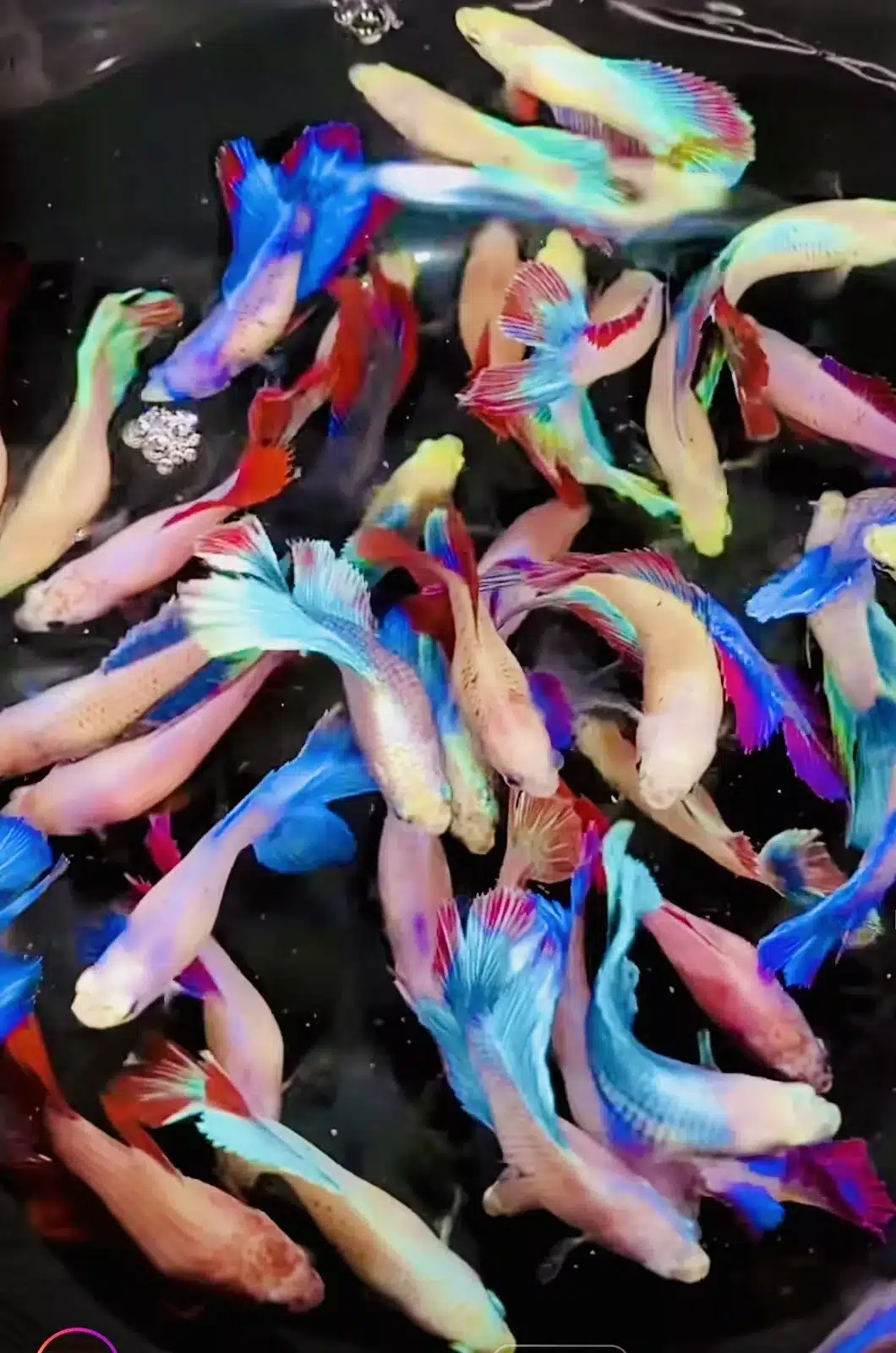
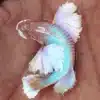
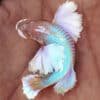
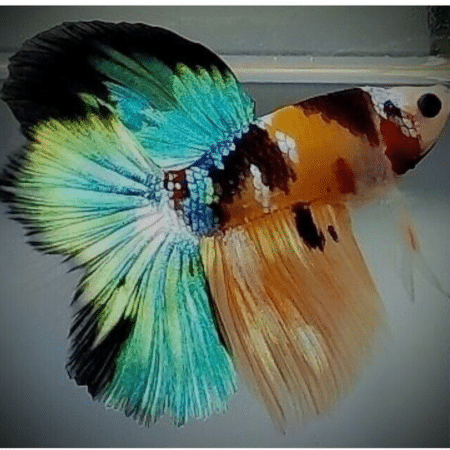

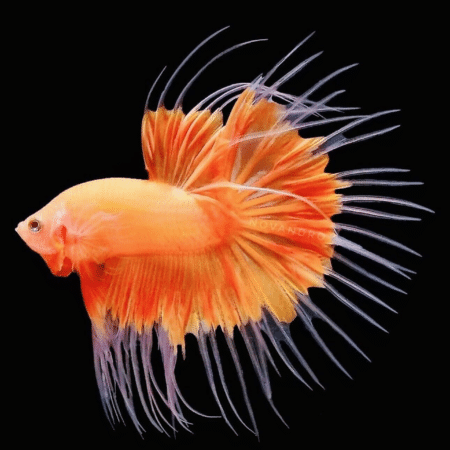

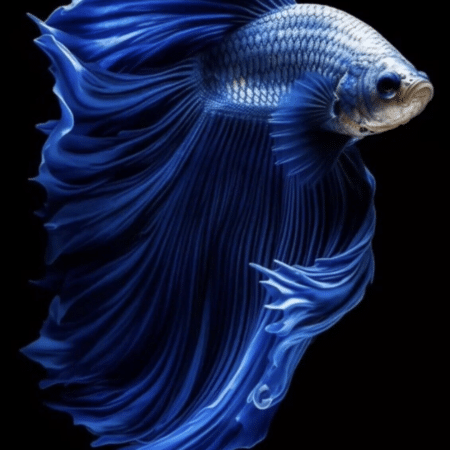

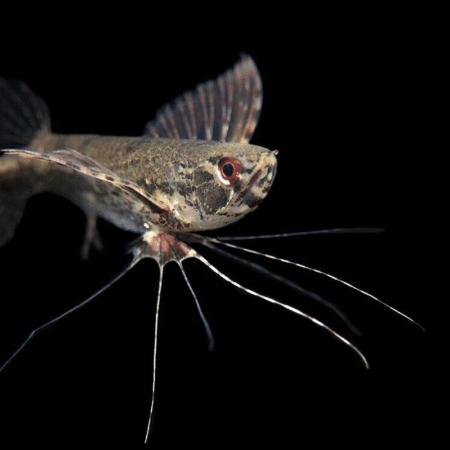
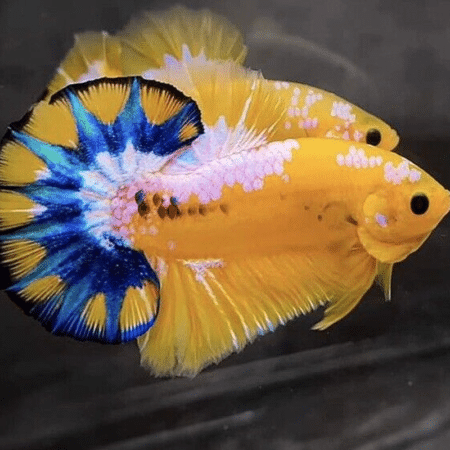

Emily Carter (verified owner) –
I recently purchased 5 female Betta splendens from this seller, and I couldn’t be happier! Each fish arrived well-packaged and healthy, which is always my top priority as a caring fish parent. After a week in my community aquarium, they adapted beautifully and are thriving alongside my other tropical fish. Their colors are vibrant, and they display such interesting behaviors that it adds a new dynamic to my tank!
I’ve kept Bettas before, but these girls have a lovely temperament and are far more social than other Betta fish I’ve tried. I also appreciate that the seller provides clear care instructions, making it easy for those new to keeping Betta fish. My only minor concern was the shipping time, which took a couple of days longer than expected, but the health of the fish made the wait worthwhile. Overall, I highly recommend these lovely Betta fish for anyone looking to brighten up their aquarium. They’re perfect for community setups or as a centerpiece if you’re focusing on a Betta-only tank. Trust me, you’ll fall in love just like I did!
Emily Carter (verified owner) –
I recently purchased 5 Female Betta splendens, and I couldn’t be happier with my decision! As a caring fish parent, I prioritize the well-being of my aquatic friends, and these beautiful tropical fish have truly brought my aquarium to life. They arrived in great condition, well-packaged, and ready to thrive.
After about two weeks, I noticed how their vibrant colors and unique personalities have created a peaceful atmosphere in my community tank. They get along wonderfully with my other fish, and I’ve seen no signs of aggression, which is such a relief!
I’ve tried other types of fish for breeding before, but the bettas are incredibly easy to care for, making them perfect for both beginners and seasoned enthusiasts. One minor concern I had was that one of the girls seemed a bit shy at first, but she quickly warmed up to the tank environment.
If you’re looking to add some charm to your aquarium while ensuring a peaceful community, I highly recommend these female bettas. They’ve become a delightful addition, and I can’t wait to see how they develop over the coming months!